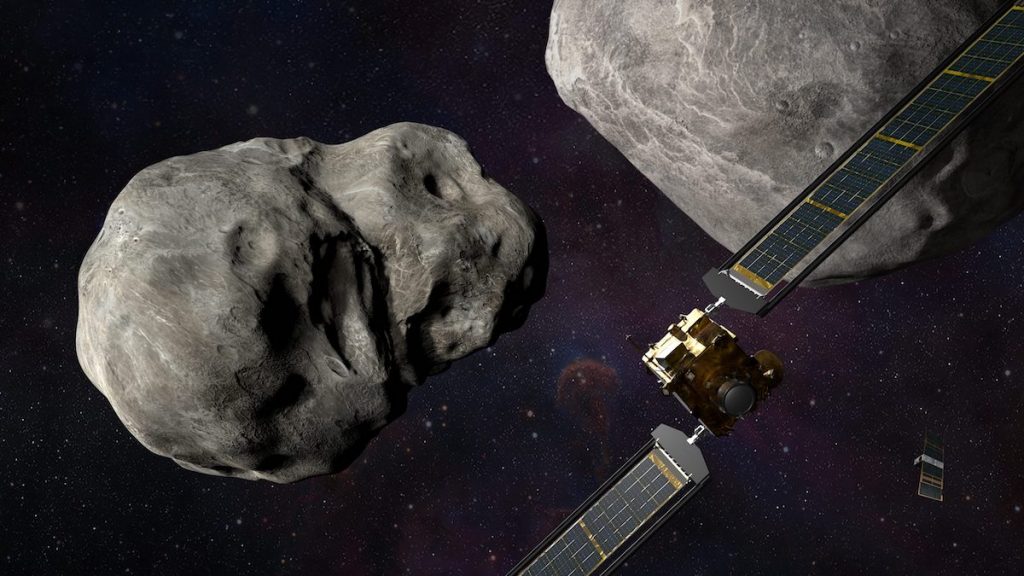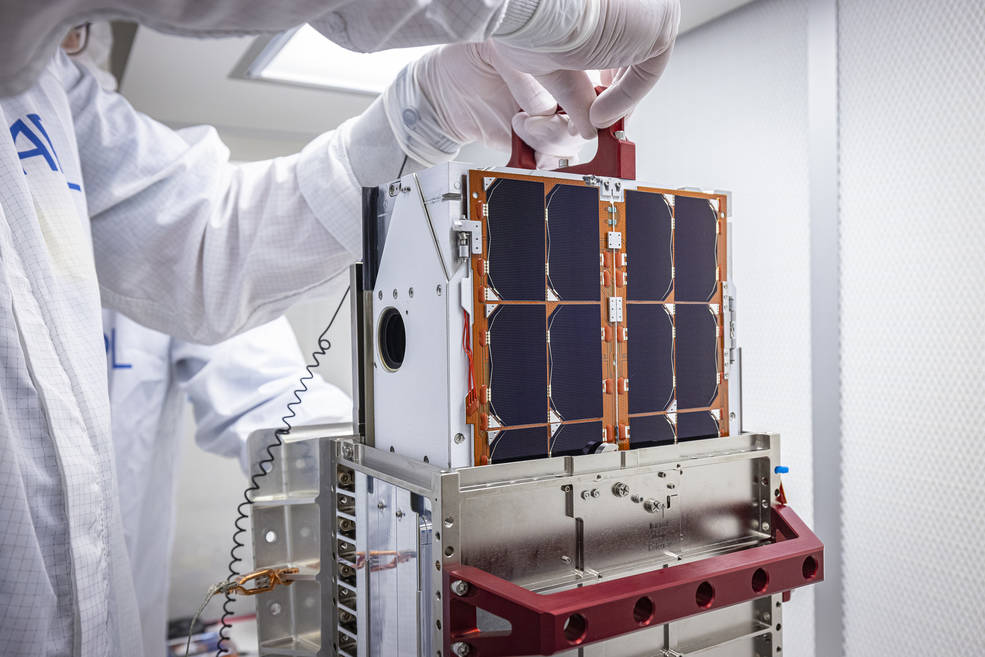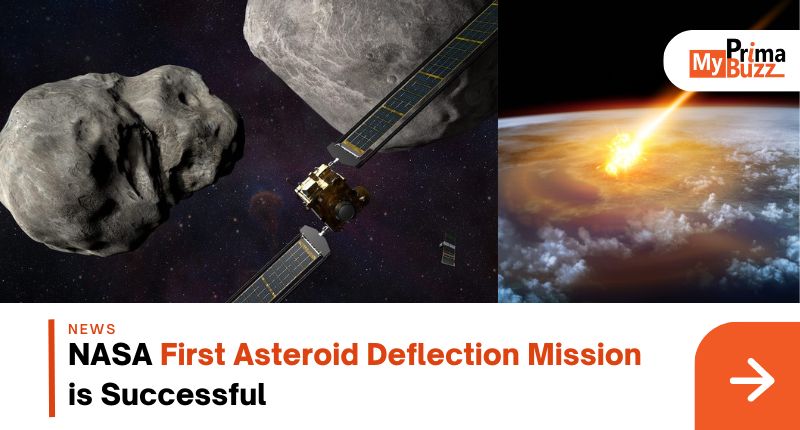NASA‘s spacecraft slammed into an asteroid in the first spectacular test of Asteroid Deflection technology that could in the future change the path into the space rock to prevent a catastrophic collision with Earth.
Series of Pictures Captured on Asteroid Deflection Until It Smashed the Asteroid
On Tuesday, the Peanut-shaped asteroid Dimorphos is approached by the 600kg Dart projectile, sending back a series of spectacular images by its cameras at a rate of one per second, until rocks, boulders and smooth ground clung to the surface of becomes visible.
The picture disappears at the moment of impact, hitting the target at 23,000 km/h. The space mission is successful where the scientists and engineers at mission headquarters at the US Johns Hopkins Applied Physics Laboratory erupted in cheers, applause, hugs and handshakes.
Immediately after the test, NASA planetary science director Lori Glaze said that we are now ushering in a new era of humanity in which we have the ability to protect ourselves from dangerous asteroid impacts. “This is when the science really begins,” Glaze added and explain that they will look into how to improve the efficiency at deflecting asteroids.

LiciaCube is a small Italian-made satellite that used to observe the collision that accompanied Dart to Dimorphos on a 11 million kilometers trip from Earth. It separated from its parent spacecraft 15 days ago and flew past the asteroid at a safe distance of 55 kilometers a few minutes after impact.
LiciaCube will take longer to transmit its images back to Earth for analysis. They are also expected to look into the resulting cloud of dust and gas instead of the impact site only.

But terrestrial telescopes will complete the main work of assessing the impact of the collision in the next few weeks. The asteroid, about 160 meters in diameter, was too far from Earth to collect detailed images, although several telescopes around the world saw a dust plume from Dimorphos immediately after the impact. They will now assess how much the impact changed its path in space.
NASA chose this target because it is part of an unusual double asteroid. While orbiting the sun, Dimorphos orbited a larger companion named Didymos. This local orbital deflection is easier to detect than orbital changes around the sun.
Dimorphos takes about 12 hours to travel around Didymos. Pre-calculations suggest that the impact will be 10 to 15 minutes shorter this time around. The actual reduction in its orbital time will provide key information about the asteroid's texture — hard or soft, consolidated or brittle.
Astronomers say there is zero chance that the impact will push the asteroid in a path that threatens Earth. In 2024, the European Space Agency will launch a probe called Hera to conduct a detailed post-impact survey of the binary asteroid system in 2026.


